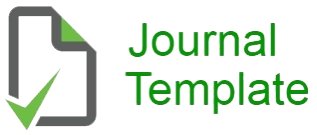LAUNDRY BUSINESS QUALITY CONTROL USING THE DMAIC METHOD (CASE STUDY: DETER_GENT LAUNDRY NUSA DUA BRANCH)
Keywords:
Laundry business, Quality, DMAIC.Abstract
The laundry business is one of the rapidly growing businesses in Indonesia. This development is due to factors such as the increasing busyness of the community, urbanization, and lifestyle changes. Deter_gent Laundry is one of the businesses that experienced a decrease in income and the number of customers from October to November in 2023 due to errors in recording the number of clothes, clothes fading, clothes shrinking, clothes lacking fragrance, and others. This study aims to analyze the problems that occur in the laundry process at Deter_gent Laundry and provide solutions to improve the quality of laundry services. This research uses the DMAIC method (Define, Measure, Analyze, Improve, Control). The results of this study indicate that the problems that occur are caused by several factors, namely human factors, method factors, material factors, and machine factors. To overcome these problems, it can be done by increasing the accuracy of employees, providing explanations, establishing and revising appropriate SOPs, and periodically controlling performance that deviates from SOPs. By implementing these solutions, it is hoped that the quality of laundry services at Deter_gent Laundry can improve and achieve the specified targets.
References
Awaj, Yonatan Mangesha., Singh, Ajit Pal., Amedie, WY (2013). Quality Using Improvement Statistical Process Control Tools in Glass Bottles Manufacturing Company. International Journal for Quality Research, 7(1), 107–126.
Ghazi, A. T., & Jahangir, A. M. (2014). Improving Quality and Productivity in Manufacturing Process by using Quality Control Chart and Statistical Process Control including Sampling and Six Sigma. Global Journal of Research in Engineering: G Industrial Engineering, 14(3 Version 1.0), 9–13.
Ishak, A., Siregar, K., Asfriyati, & Naibaho, H. (2019). Quality Control with Six Sigma DMAIC and Gray Failure Mode Effect Analysis (FMEA): A Review. IOP Conference Series: Materials Science and Engineering, 505(1). https://doi.org/10.1088/1757-899X/505/1/012057
Coil. (2023). Understanding Modern Lifestyle and Impact on Society. Kumparan.Com. Accessed March 8, 2024, from https://kumparan.com/berita-terkini/pengertian-gaya-live-modern-dan-dampak-bagi-community-1zf1z9LKXqb/4
Coverage6. (2023). Growing 50 Percent, Indonesia Has Great Potential to Become a Main Market for the Laundry Business. Liputan6.Com, Jakarta. Accessed March 8, 2024, from https://www.liputan6.com/amp/5223535/tumbuh-50-persen-indonesia-berpotensi-besar-jadi-pasar-utama-bisnis-laundry
Montgomery, D.C. (2012). Statistical Quality Control (Seventh Ed). United States of America: John Wiley & Sons, Inc.
Neyestani, B. (2017). Seven Basic Tools of Quality Control: The Appropriate Techniques for Solving Quality Problems in the Organizations. SSRN Electronic Journal, 1–10. https://doi.org/10.2139/ssrn.2955721
Rezki Renanda, Farid, & Umar. (2023). Implementation of Effective Quality Control to Improve Employee Performance at the Yumna Laundry Business. Collaborative Journal of Science, 6(3), 218–224. https://doi.org/10.56338/jks.v6i3.3393
Simanová, Ľ., & Gejdoš, P. (2015). The Use of Statistical Quality Control Tools to Quality Improving in the Furniture Business. Procedia Economics and Finance, 34(15), 276–283. https://doi.org/10.1016/s2212-5671(15)01630-5
Sutikno, DMS, & Prosmala Hadisaputra, MP . (2020). Qualitative Research. Lombok: Holistica Lombok.
Downloads
Published
Issue
Section
License
Copyright (c) 2024 INTERNATIONAL JOURNAL OF ECONOMIC LITERATURE

This work is licensed under a Creative Commons Attribution-NonCommercial-ShareAlike 4.0 International License.
INTERNATIONAL JOURNAL OF ECONOMIC LITERATURE © 2023 by Adisam Publisher is licensed under CC BY-SA 4.0







